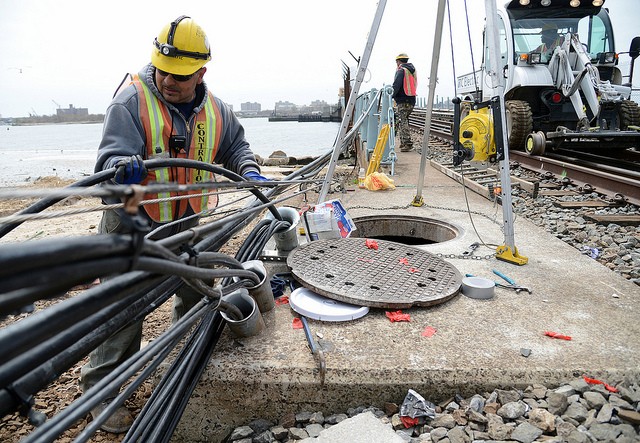The President’s Address to a Joint Session of Congress on February 28 put a spotlight on the need for a massive infusion of new investments in our transportation infrastructure.
There’s no denying that such investments are needed. Pouring $1 trillion into our infrastructure — as the President has proposed — would create millions of middle-class jobs and upgrade and modernize our transportation system to which our nation’s leading civil engineers give a low grade. This is something both Republicans and Democrats agree on.
That’s the good news.
The bad news? There is too much focus on using the tax code to incentivize private investment in infrastructure projects. TTD and our affiliated unions agree with lawmakers who have raised red flags about overreliance on this form of financing.
At a recent Senate Commerce Committee hearing, chairman of the committee Sen. John Thune (R-SD) said, “compared to rural areas, high population density urban areas may be conducive to a more diverse range of financing options, including public-private partnerships, so-called P3s.” He added that P3s are a “valuable supplement, but not a substitute for traditional infrastructure investment.”
We agree wholeheartedly. Not only will a program that relies mostly on P3s not work for rural America, it will not work for most transportation investments. Yes, private companies play a large role, together with public partners, in executing large infrastructure projects, but private investors shouldn’t be seen as a primary source of funding. Here’s why:
- Private capital is more expensive than traditional financing. Not only are private entities forced to borrow at higher rates than governments, but private businesses need to make a return on their investment. All of this results in higher project costs to make up that return.
- Private funding only works if projects are able to generate revenue streams and turn a profit. That means a majority of projects, including those in rural areas, probably won’t get funded. We can’t toll our way to a trillion-dollar investment plan.
- Infrastructure projects that are profitable often already have private investors lined up. Therefore, a plan that relies on private funding could reward companies for financing projects that are already in the process of being built.
- Finally, let’s not forget that many P3s, especially those that reach into operations and maintenance, have been botched over the years and the victims are usually the taxpayer, the users of the asset and, of course, public sector workers.
It is time for the President and Congress to find a way to pay for a $1 trillion plan that includes a substantial amount of new federal funds. A plan that almost exclusively relies on tax incentives for private investment will not bring fast trains and modern infrastructure to Amtrak, modernize our ports, replace and repair 60,000 bridges, pump new life into budget-starved public transit systems, or deal with the multi-billion dollar shortfalls in highway improvements.
Real money will. Stay tuned for more on this from MoveAmerica.
